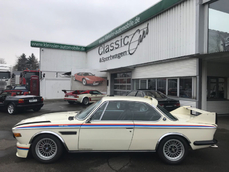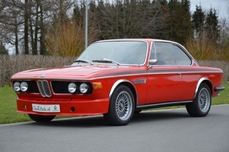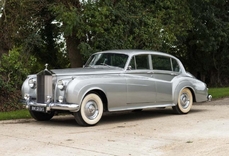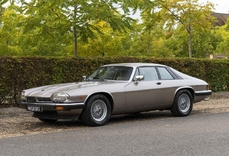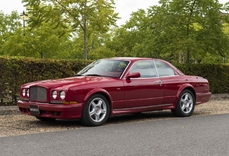BMW 3.0CSL e9 1972
Allgemeine Beschreibung :
1 of just 500 RHD cars
426th RHD car
Karmann lightweight coachwork
Former Concours d’Elegance winner BMW car club
Exquisite motoring magazine editorial feature
Matching numbers
Formerly part of a large private collection
1972 BMW 3.0 CSL Former Concours d’Elegance Winner For Sale In London ( RHD )
The early 1970s were landmark years for BMW, for not only did the German manufacturer power Jean-Pierre Jarier to the European Formula 2 Championship, it also captured the European Touring Car Championship using one of the most iconic racing ‘saloons’ of modern times: the 3.0 CSL, known popularly as the ‘Batmobile’.
BMW had returned to six-cylinder power for its range-topping models in 1968 with the launch of the 2500 and 2800 saloons. Also new was the 3.0 CSL’s forerunner, the 2800CS Coupe, though the latter’s running gear had more in common with the existing, four-cylinder 2000C/CS. The introduction of the similarly styled 3.0-liter CS in 1971 brought with it numerous improvements, including four-wheel ventilated disc brakes, and with 180bhp on tap the model was good for around 130mph. For racing purposes, there was also the lightweight 3.0 CSL.
Visually indistinguishable from its more ‘run of the mill’ relations, (the CS and CSi) the 3.0 CSL (Coupe Sport Leicht) was creative homologation at its best. The BMW engineers’ solution to the marketing department’s requirements was to develop a limited production run ‘homologation special’ to meet the constrictive framework of the Group 2 racing class regulations. By removing the trim; using thinner steel for the main body-shell; aluminium alloy for the doors, bonnet and boot lid; and Perspex for the side windows, a valuable 300lbs (136kgs) in weight was saved – ‘Leicht’ indeed.
Homologated initially with a fractionally over-bored (3,003cc) engine (enabling it to compete in the over 3-litre class) the 3.0 CSL came with 206bhp for road use and well over 300 horsepower for the track. In 1973, the engine’s stroke was increased, upping capacity to 3,153cc (nominally 3.2 liters) and from mid-season onwards the racing CSLs used the so-called ‘Batmobile’ aerodynamic package, developed at Stuttgart University, which consisted of a front chin spoiler, large rear wing, and other various devices. Illegal for road use in Germany, the wings were left in the boot for final installation after purchase.
Thus equipped the Batmobile’s were able to defeat the previously all-conquering Ford Capri RS2600s.
Our very good friend, Toine Hezemans captured the 1973 European Touring Car Championship for BMW at the wheel of a 3.0 CSL and co-drove one to a class win at Le Mans that year with Dieter Quester. Ford bounced back in 1974 but from 1975 onwards the BMW ‘Batmobiles’ won five consecutive European Touring Car Championships, a quite unprecedented run of success.
Beautifully finished in Taiga Green metallic coachwork with contrasting Black original Scheel seats and a period Blaupunkt radio cassette. The car is 1 of a total of 1039 combined LHD & RHD cars manufactured by Karmann for BMW and is car number 426 of 500 RHD supplied new via Park Lane BMW London to Mr Dennis Spight of Kent. The car stayed in Mr Spight’s ownership for next seven years.
Being one of the original ‘City package’ cars it has the factory fitted chrome bumpers, softer sports suspension, electric windows, radio cassette and Scheel sports seats. The car was later acquired by Mr C. Holliday, it was during his ownership the car underwent significant cosmetic and mechanical works. Once completed the CSL entered into the world of Concours where it won best in class at the 40th anniversary BMW Car Club held at Longleat House. The following year it was exquisitely featured in a motoring magazine with a four page editorial.
Coming complete with a wealth of invoices spanning 40 years, the complete tool set, owners manuals, press cuttings, magazine editorials, together with details of awards and accolades awarded to the car. This is a special opportunity to buy a true icon of the 70’s.
Now available for viewing at the DD Classics Dealership in London, please call for more information.
http://ddclassics.com/car-listing/bmw-3-0-litre-csl-rhd/
1972 BMW 3.0CSL e9 is listed verkauft on ClassicDigest in Surrey by DD Classics for Preis nicht verfügbar.
Fakten der Auto
Karosserietyp : Auto Marke : BMW Modell : 3.0CSL e9 Hubraum : 0.0 Modelljahr : 1972 Karosstyp : Coupé Lage : Surrey
Verkauft
Angaben Zum Verkäufer
Verkauft
People who viewed this BMW 3.0CSL e9 also viewed similar BMW listed at ClassicDigest
Other cars listed for sale by this dealer
über BMW
Bayerische Motoren Werke, allgemein bekannt als BMW, hat eine reiche Geschichte, die bis zu ihrer Gründung im Jahr 1916 zurückreicht. Ursprünglich als Flugzeugmotorenhersteller während des Ersten Weltkriegs gegründet, sah sich BMW nach dem Krieg Beschränkungen bei der Flugzeugproduktion gegenüber. Als Reaktion darauf verlagerte das Unternehmen 1923 seinen Fokus auf die Motorradproduktion, was den Beginn seiner Beteiligung an der Automobilindustrie markierte. Anschließend stieg BMW 1928 in die Welt der Automobile ein, indem es den DIXI produzierte, im Wesentlichen eine lizenzierte Version des Austin 7 von der Austin Motor Company.In den 1930er Jahren begann BMW, sich als Hersteller von eleganten und leistungsstarken Fahrzeugen zu etablieren. Ein bemerkenswertes Modell aus dieser Zeit ist der BMW 327, der 1937 eingeführt wurde. Der 327 war sowohl als Coupé als auch als Cabriolet erhältlich und zeigte das Engagement der Marke für Luxus und Stil. Darüber hinaus erzielte BMW in dieser Zeit im Sportwagenrennsport Erfolge, insbesondere mit dem BMW 328. Der 328, der 1936 debütierte, wurde für seine Leistung und Aerodynamik bekannt. BMW setzte den 328 in verschiedenen Rennveranstaltungen ein, darunter die prestigeträchtige Mille Miglia, bei der das Unternehmen mehrere aerodynamische Spezialmodelle präsentierte.
Die Nachkriegszeit erwies sich für BMW als herausfordernd, und das Unternehmen sah sich finanziellen Schwierigkeiten gegenüber, die beinahe zu einem Konkurs führten. Dennoch gelang es BMW, sich zu erholen und wieder aufzubauen und schließlich zu einer der führenden Premium-Automarken weltweit zu werden.
Als die 1960er Jahre begannen, festigte BMW weiter seinen Ruf als Hersteller von sportlichen und luxuriösen Fahrzeugen. Im Jahr 1968 wurde der BMW 2002 eingeführt und markierte die Geburt der "Neuen Klasse" kompakter, sportlicher Limousinen. Der 2002 erlangte Popularität durch sein agiles Handling und seine Leistung und legte den Grundstein für das sportliche Image von BMW.
Mit den 1970er Jahren erweiterte BMW seine Modellpalette mit der Einführung der E9-Plattform, zu der der ikonische BMW 3.0 CS Coupé gehörte. Die E9-Serie zeigte das Engagement von BMW für die Verbindung von Leistung und Luxus. Im Jahr 1972 feierte der M1, das erste mittelmotorgetriebene Sportwagen von BMW, sein Debüt. Der M1 wurde zunächst als Rennwagen entwickelt, wurde aber später auch als Straßenfahrzeug angeboten. Der M1 legte den Grundstein für die leistungsstarke M-Serie von BMW.
Ende der 1970er Jahre wurde die BMW E24 6er-Reihe eingeführt, die eine Kombination aus Luxus und Leistung bot. Die 6er-Reihe umfasste Modelle wie den 630CS, 633CSi und 635CSi und wurde zum Symbol für Eleganz und Fahrvergnügen.
Durch diese Meilensteine und das Engagement für Innovation und Leistung hat sich BMW zu einem Schwergewicht in der Automobilindustrie entwickelt und behauptet weiterhin seinen Status als eine der führenden Premiummarken weltweit.


